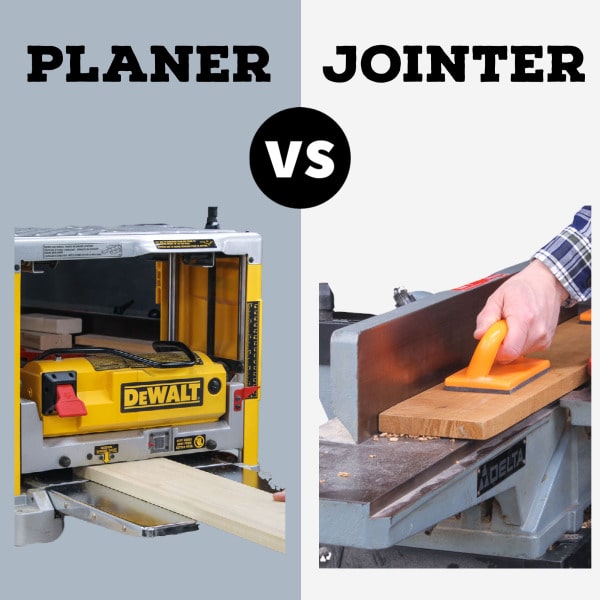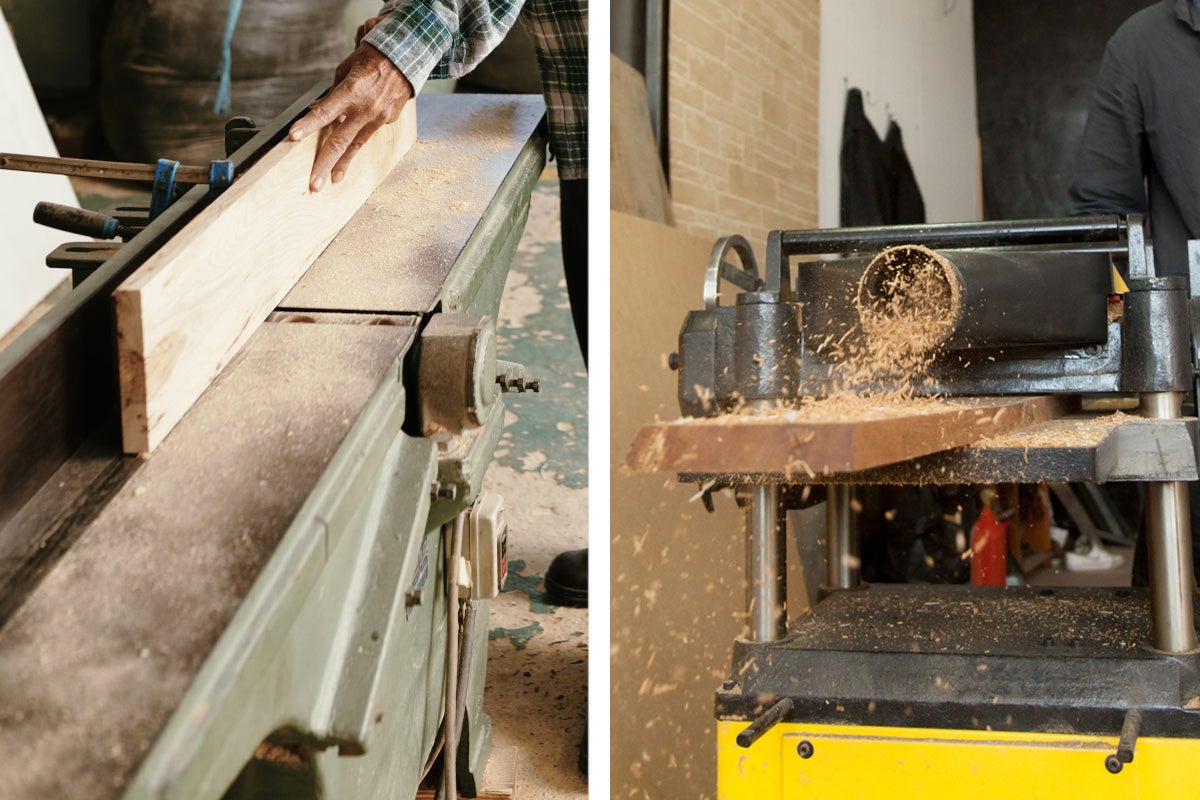A jointer is a tool that flattens one face and straightens one edge of a board, while a planer is a tool that reduces the thickness of the board and makes it uniform. Jointers and planers are both essential tools for woodworking, especially when dealing with rough lumber.
In woodworking, the quality of the finished product is dependent on how well you prepare your material. Jointers and planers are two essential tools that every woodworker should have in their workshop. The jointer allows for one face and one edge of the board to be flattened and straightened, while the planer reduces the thickness of the board to make it uniform.
These tools save time, increase accuracy, and provide a professional finish for any woodworking project. This article will provide a detailed explanation of what a jointer and planer are, how they work, and their uses in woodworking.

Credit: sawsonskates.com
What Is A Jointer?
A jointer is a woodworking machine used to flatten and straighten wood. It typically features a flat surface and adjustable blades or knives that level uneven edges. Jointers come in various sizes, from small benchtop models to large industrial machines.
The blades or knives are essential components of a jointer and must be kept sharp for optimal performance. Some jointers may have a spiral cutting head while others have a straight knife design. Any woodworker who regularly works with rough lumber can benefit from a jointer, as it provides a flat and straight surface for further processing.
When selecting a jointer, consider the size of the workpiece and the desired finished product, as well as the workspace available.
What Is A Planer?
A planer is a woodworking tool used to flatten and smoothen wood surfaces. Its primary function is to reduce the thickness of uneven wood boards to achieve a consistent thickness. The planer works by shaving thin layers of wood from the surface of the board.
There are two types of planers: hand planers and power planers. Planers can have two or four blades, and the blades can be high-speed steel or carbide. When purchasing a planer, it’s essential to consider the size of the board you’ll be working on and the size of the planer.
A larger planer can handle wider and thicker boards, but it takes up more space and costs more. A smaller planer is more portable and less expensive. Overall, a planer is an essential tool for any woodworking project.
Jointer Vs Planer: Differences
Jointer vs planer: differences a jointer is a woodworking tool that flattens and smoothens wooden surfaces, making them ready for further use. A planer, on the other hand, is a tool responsible for cutting wood to a uniform thickness. The main purpose of a jointer is to level surfaces, and it’s not suited to cut wood into specific thicknesses.
A planer is ideal for achieving precise thickness. A jointer, however, is necessary before planer work as it flattens the surface. Both tools work together for optimal wood preparation, though planers aren’t as good as jointers for surface leveling. Jointers have shorter beds than planers, limiting the size of wood they can hone.
Owning both tools is advantageous as they’re not interchangeable and completing more significant projects would take much longer.
Jointer Vs Planer: Pros And Cons
Jointers and planers are ideal for constructing flat surfaces. Jointers are perfect for edge joining and straightening warped boards. They also allow precise measurements but are costly, taking up more space than planers. Planers excel at smoothing rough surfaces, thickness planing, and handling larger board sizes.
They are also more versatile than jointers and can cause tear-out on some woods. However, planers are not suitable for edge jointing and offer less precise measurements than jointers. So, if you want to create flat surfaces, a jointer is best, but if you need more versatility, a planer is the tool for the job.
Keep in mind, you don’t have to choose one or the other, having both will maximize your woodworking output.
Frequently Asked Questions Of What Is A Jointer Vs Planer?
What Is A Jointer Used For?
A jointer is used to create a flat surface on a rough or warped board. It removes a small amount of material with rotating blades, resulting in a smooth, flat surface.
What Is A Planer Used For?
A planer is used to make a board of uniform thickness. It can take rough-sawn lumber and mill it down to a consistent thickness and smoothness.
What’S The Difference Between A Jointer And A Planer?
A jointer flattens a face or an edge of a board, while a planer makes the board uniform in thickness. Jointers and planers are often used together to prepare wood for projects.
Can A Jointer Be Used As A Planer?
No, a jointer cannot be used as a planer. Although it can create a flat surface, it doesn’t change the thickness of the board. Trying to use a jointer to plane a board could result in damaged equipment and a ruined board.
Can A Planer Be Used As A Jointer?
No, a planer cannot be used as a jointer. It removes material evenly across the entire board, so it won’t fix any unevenness that may exist on one face or edge. A jointer is necessary to create a flat surface on a piece of wood.
Conclusion
Those who are woodworking enthusiasts or those who have a keen interest in renovating wood must understand the difference between a jointer and planer. A jointer is primarily used to flatten the surface of a warped, twisted, or curved board, while a planer is utilized to attain uniform thickness throughout.
The process of using a jointer and planer might seem a bit complicated, but with the right knowledge and practice, one can easily master it. It is important to choose the right tool based on the project requirement as both have their unique functions and purposes.
With the advent of modern technology, one can invest in an electric jointer and planer for more precise and faster results. By choosing the right jointer and planer, one can bring life to the wood and create beautiful finishes and designs.
So, select the one that fits your project needs, and enhance your woodworking experience like a professional.
